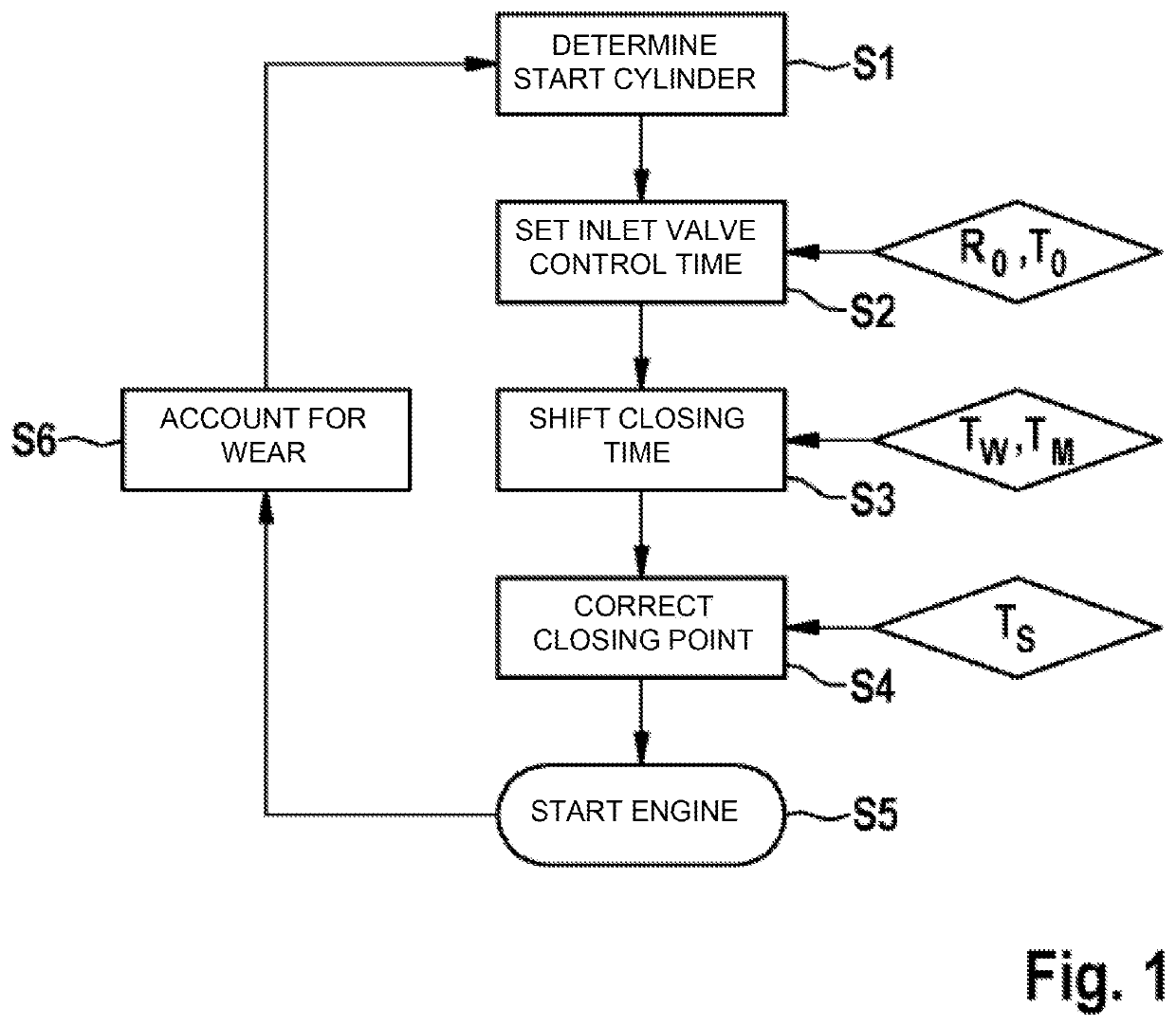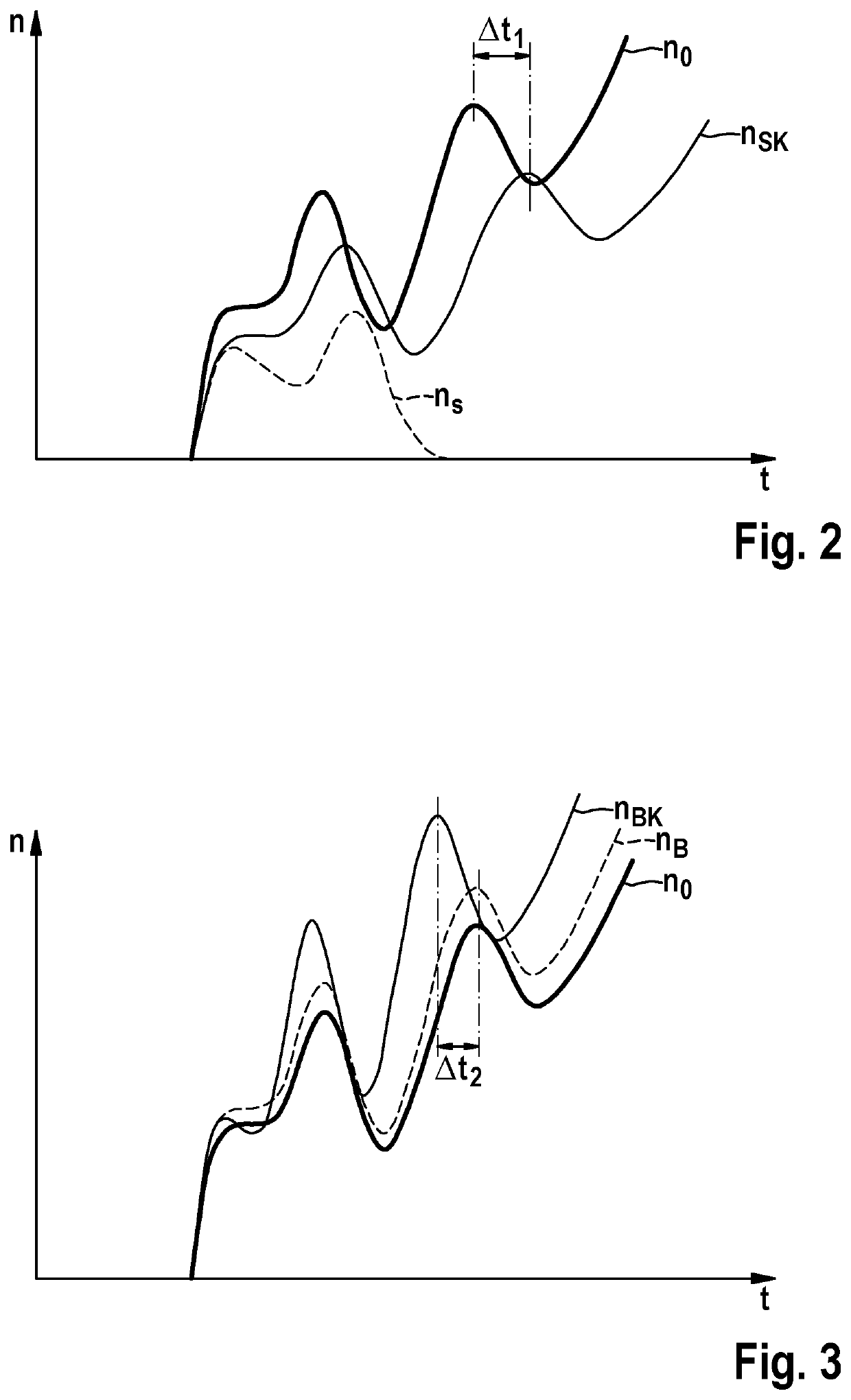Method for starting an internal combustion engine, device and computer program product
a technology of internal combustion engine and engine start, which is applied in the direction of engine starters, machines/engines, mechanical equipment, etc., to achieve the effect of reliable direct start and reliable run up of internal combustion engines
- Summary
- Abstract
- Description
- Claims
- Application Information
AI Technical Summary
Benefits of technology
Problems solved by technology
Method used
Image
Examples
Embodiment Construction
[0017]In a simplified flow diagram, FIG. 1 shows a method for starting an internal combustion engine which has at least two cylinders, in the present example six cylinders, and a valve drive, wherein the valve drive has at least one inlet valve and at least one outlet valve for each of the cylinders and wherein at least the closing time of the inlet valves can be variably adjusted. The internal combustion engine further comprises a gasoline direct injection system, by means of which fuel can be directly introduced into the cylinders. An ignition device, in particular a spark plug, is furthermore associated with each of the cylinders in order to ignite the fuel introduced into the respective cylinder.
[0018]The internal combustion engine is to be put into operation by means of a direct start or, respectively, a decompression start, wherein fuel is injected into a cylinder, the piston of which is located statically in the expansion phase, and ignition is initiated. The ensuing combusti...
PUM
 Login to View More
Login to View More Abstract
Description
Claims
Application Information
 Login to View More
Login to View More - R&D
- Intellectual Property
- Life Sciences
- Materials
- Tech Scout
- Unparalleled Data Quality
- Higher Quality Content
- 60% Fewer Hallucinations
Browse by: Latest US Patents, China's latest patents, Technical Efficacy Thesaurus, Application Domain, Technology Topic, Popular Technical Reports.
© 2025 PatSnap. All rights reserved.Legal|Privacy policy|Modern Slavery Act Transparency Statement|Sitemap|About US| Contact US: help@patsnap.com


